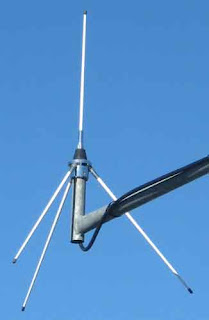The process of data collection, reporting from the production lines, material handling and other processes in the production stage will be easy when using the SCADA system. SCADA systems can be implemented in many ways to make employees will get the ease of accessing data at any place on the point of the production process anywhere, also to get a graph of performance and the results of the process, and subsequent reporting can be created automatically in real time based on the data available in a format specific example the base day, base weekends or other time basis.
The following sections will present the 9 methods for deploying SCADA systems:
The following sections will present the 9 methods for deploying SCADA systems:
1. Twisted-Pair Metallic Cable
In this telecommunication industry, aerial cables are more popular to be used as connection cable to connect the utilities service area since the Utility may own a large number of distribution poles. It has many advantages such as: No licensing, fewer approvals, Existing pole Infrastructure, Economical for short distances but you have to consider disadvantage like: Subject to breakage, Subject to water ingress, and Subject to ground potential rise due to power.2. Coaxial Metallic Cable
If you want to transmit high frequency signals up to several MH then the connection cable appropriate is Coaxial cable. It composed by a center copper conductor, polyvinyl chloride (PVC) Insulation that can make high transfer process. It also extruded copper shield surrounding the center conductor and PVC insulation, with advantages more immune to radio frequency and having higher channel capacity. On the other hand it has many disadvantages such as subject to breakage and water ingress.3. Fiber Optic Cable
If your working area has been supported by fiber optic cable, the appropriate cable is Fiber optic technology where commercially available fibers have losses less than 0.3 dB/km. The benefits are Immune to electromagnetic, ground potential rise, Inflexible network configuration, Low operating cost but you have to consider losses of this magnitude, as well as the development of suitable lasers and optical detectors.4. Power Line Carrier
Power Line Carrier (PLC) more popular to be used since it conduct as the first reliable communications media available to electric utilities for critical communications channels. Intolerance and unreliability of leased (common carrier) telephone circuits make it provide high performance communication data results. It can transmit radio frequency signals in the range of 30 kHz to 500 kHz. But something that make it not practical to use are carrier frequencies often not protected on a primary basis.5. Satellites
Satellites positioned in geostationary orbit above the earth's equator into a medium of communication that proved effective, fast and easy for coverage over a particular area of the earth. Technology that is widely in use that is based VSAT advancing steadily use both the C-band and the Ku-band. Wide area coverage, Easy Access to remote sites, Costs independent of distance can be preferred option using this technology but you have lack on total dependency on a remote facility, Less control over transmission and transmission time delay you must considered on those.6. Leased Telephone Lines
Leased Lines Telephone much connected to the Public Switched Network (PSN) for office communication and for the special communication needs, such as telemetry and SCADA. For SCADA communication requires Wideband channel at high speed signals. Small Capital Outlay, Maintained circuit quality is critical benefits for you but Circuits may not be available at some sites and Repair and maintenance is not controlled by the lessee could be considering before your choose it.7. Very High Frequency Radio
Advances in data transmission in a mobile radio has succeeded in utilizing the Very High Frequency (VHF) band to support communication SCADA control system with a frequency range of 30-300 MHz. You can take benefits such as Frequency assignments available, Propagation over non-line-of-sight paths, Low cost radios compared to microwave but having problem for example Low channel capacity, Low digital data bit rate, Limited transmission techniques available that you must create solution.8. Ultra High Frequency Radio
SCADA application that uses ultra high radio frequency using a frequency range of 900 MHz and can extend up to 300-3000 MHz. band to reach a wider area. The usage is limited, especially in the US, the Federal Communications Commission (FCC) regulates the use of radio frequencies is the range of 928-952 MHz and is used for data communications applications. UHF covering the system may Point-To-Point (PTP), Point-To-Multipoint (PTM), Multiple Address Radio Systems and Spread Spectrum Radio.9. Microwave Radio
Microwave Radio is the term used to describe the UHF radio system operates at a frequency above 1 GHz, although the multi-channel radio systems operating below 1 GHz One use of Frequency Division Multiple Access (FDMA), Time Division Multiple Access (TDMA) and Code Division Multiple Access (CDMA).Conclusion
Those review above will provide knowledge about the concept of SCADA and technical implementation and several ways in which SCADA systems are connected can range from fiber optic cable to the use of satellite systems in the company. So, yo u can choose which one the best for your needs.
Labels:
SCADA Articles
SCADA Articles








